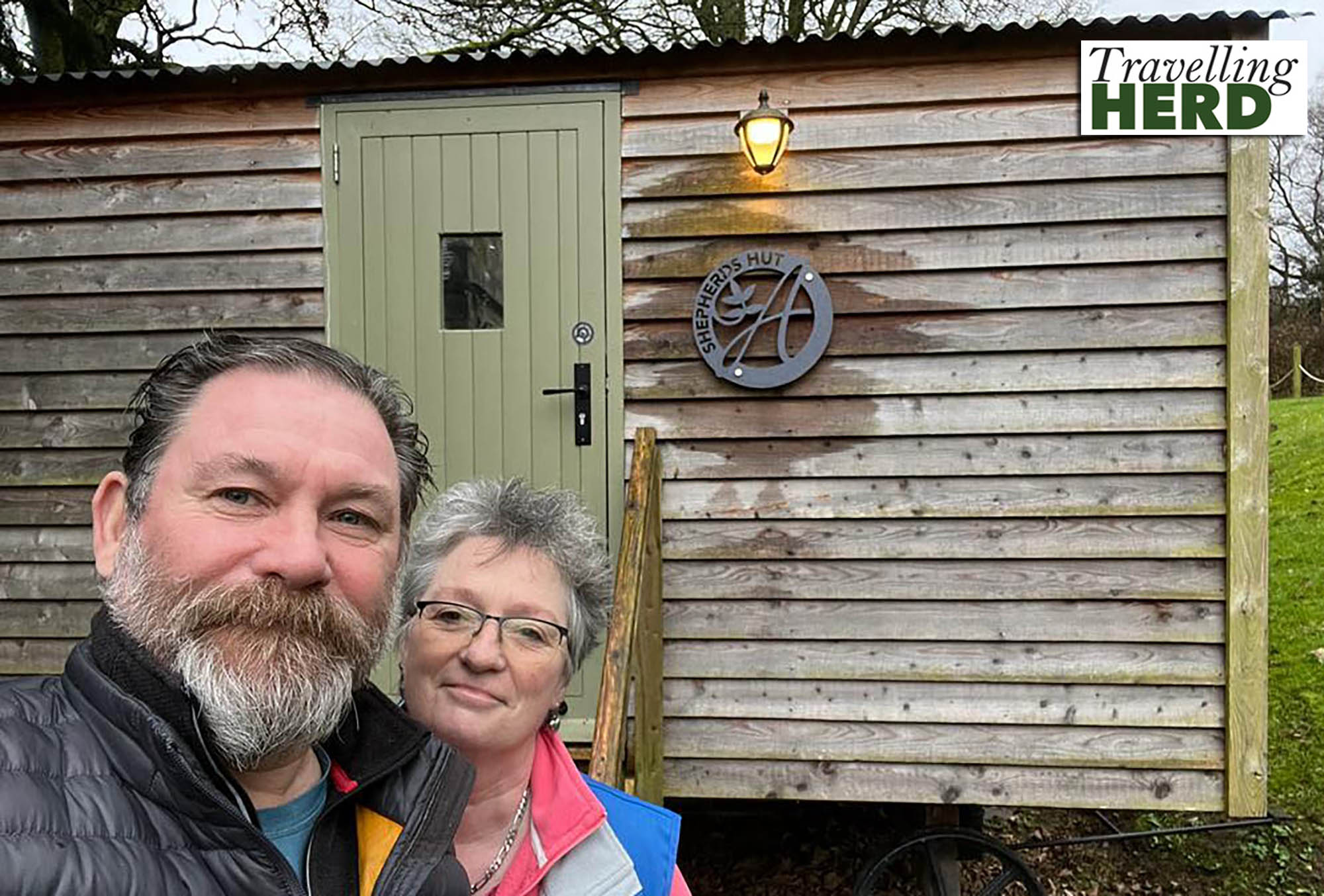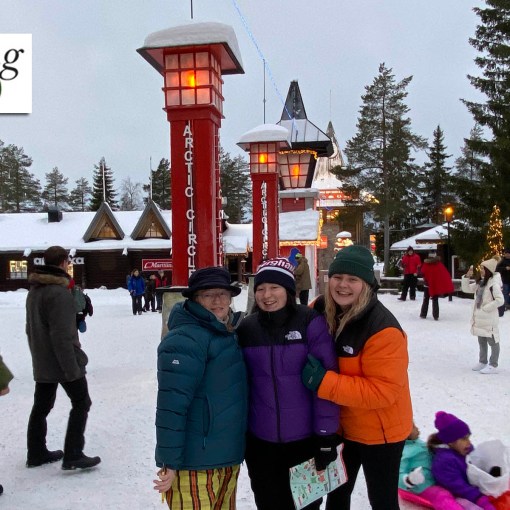Thursday 12th to Sunday 15th January 2023
We were delighted to be invited to Staffordshire to celebrate the long-awaited wedding of Liz and Martin, two very dear friends who have shared several of Travelling Herd’s adventures.
Duncan and Phil [who regular readers may remember provided Matilda with a very welcome bath during our Narrowboat Adventure #4] invited us to stay with them the night before the wedding. It was a real pleasure to be able to catch up before the ceremony and Matilda particularly enjoyed meeting fellow wedding guests Jo and Paul face to face for the first time, having previously only met them over Zoom during lockdown.
Long standing friends and their partners were seated together at the reception and the years and miles just slipped away.
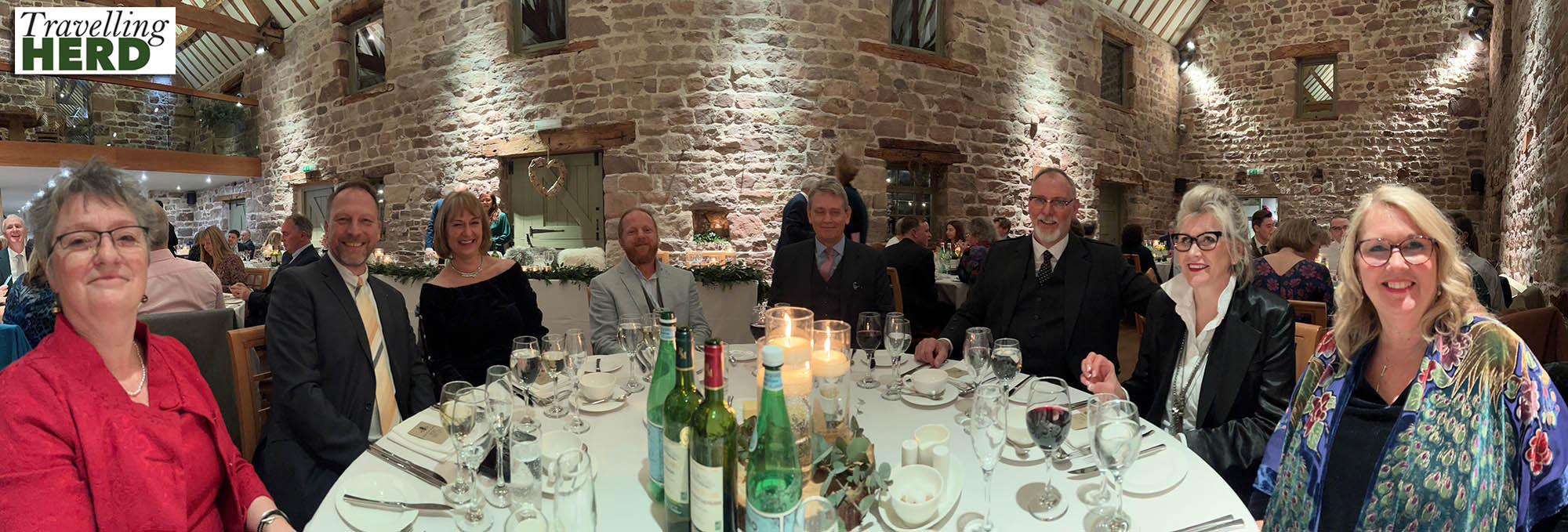
When Robert and Matilda first met [towards the end of 1989] Liz and Martin were a couple and we [along, we suspect, with many of their other friends and relatives at that time] expected them to become husband and wife. Life can be unpredictable and they went their separate ways. Two marriages, two families and two divorces later, we have finally borne witness to what many of us knew to be true – they were meant to be together.

It was such a pleasure to be part of these celebrations; to see Liz and Martin so happy and to listen to David Patterson, the Father of the Bride, providing them with a recipe for a successful marriage.
Robert felt the need to pull rank as he had known both Liz and Martin before they met each other while Matilda felt particularly honoured to be asked to read at the ceremony.
We had travelled through this part of the country on The Duke on our Narrowboat Adventure in the spring of 2022. Matilda vividly remembers arriving exhausted in Manchester on the 22nd March 2022, having travelled for 12 hours along 7.26 miles down the Rochdale Canal and opened and closed 28 locks [see Narrowboat adventure #12]. We moored in Castlefield which was vibrant in the sunshine; buzzing with cheerful voices and the clink of glasses and we both agreed we would like to return.
When we found we were going to be in Staffordshire we therefore decided we would extend our trip and revisit Manchester in order to go to the Manchester Science and Industry Museum which is dedicated to 250 years of innovations which were developed in Manchester and went on to revolutionise the world. Unfortunately parts of this are closed for refurbishment including the Power Hall and the Air and Space Hall but it was nevertheless interesting and enjoyable.
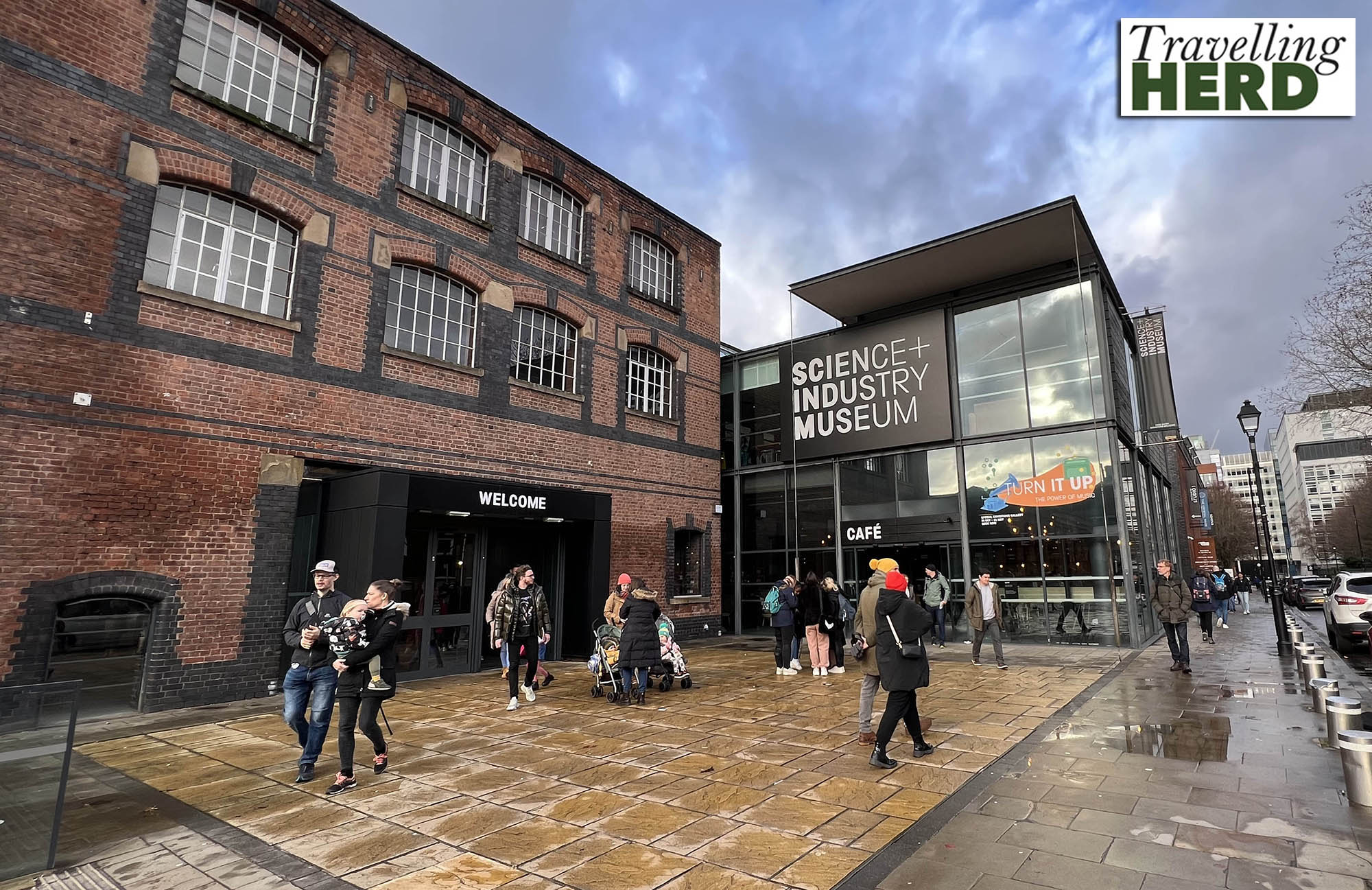
Ironically, given his other achievements, one display credited Alan Turing with writing the user manual for Baby, the first commercially available computer. Alan Turing had previously designed a purely theoretical concept but this was a small scale experimental machine and the first electronically stored programme computer, which was initially known as the Manchester Mark I and became the Ferranti Mark I. Apparently in the 1950s, almost half of “Ferranti’s computer programmers were women, chosen for their accurate and reliable work”. Sadly we doubt that this level of equality still holds across the industry.
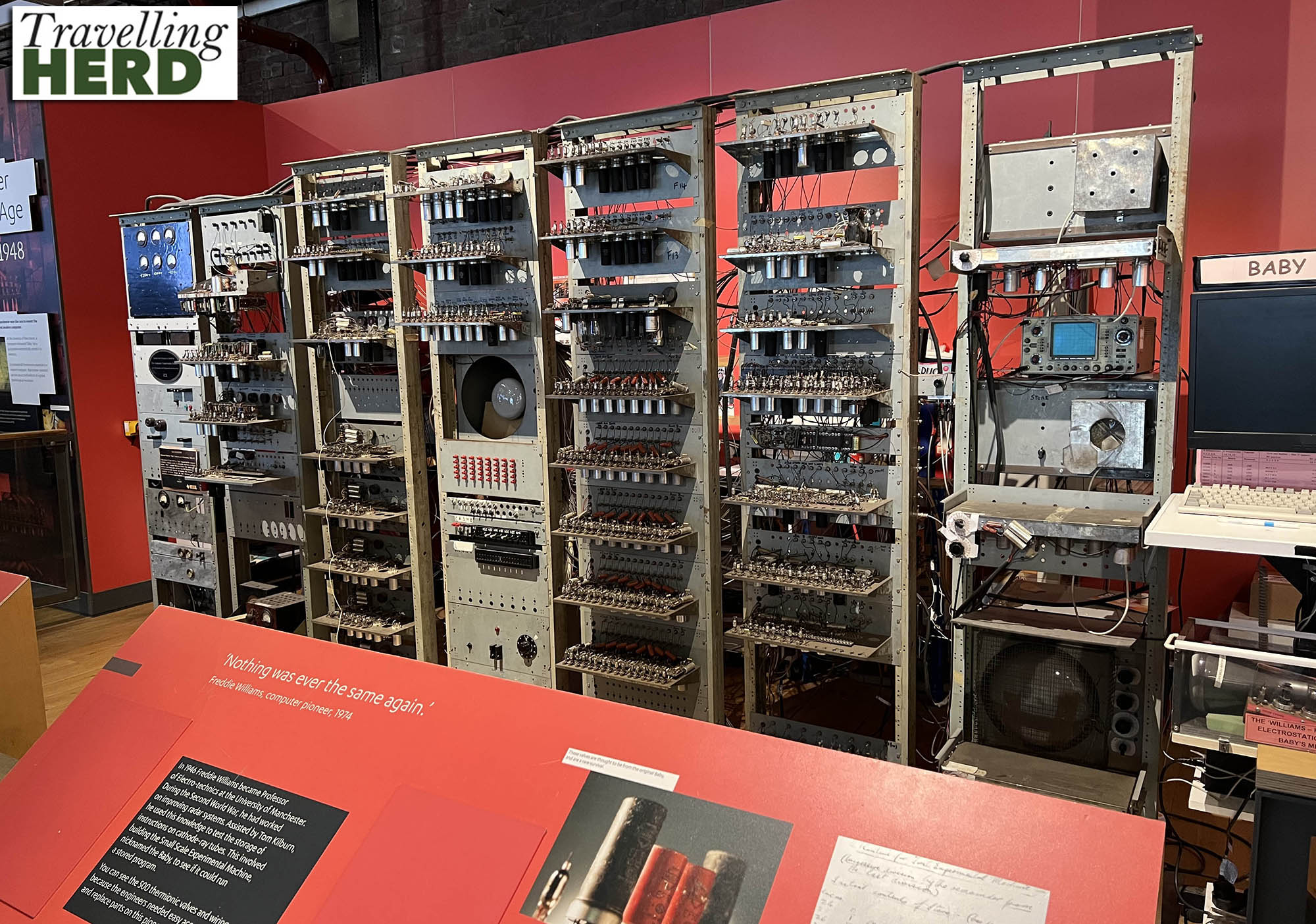
Rowland Emett is probably best known for creating the inventions in Chitty Chitty Bang Bang, including the eponymous car itself. An artist, cartoonist and engineer, he created this incredibly detailed and quirky moving sculpture. The driver seems a little distracted from his job however as he is toasting tea cakes on the fire box of the locomotive.
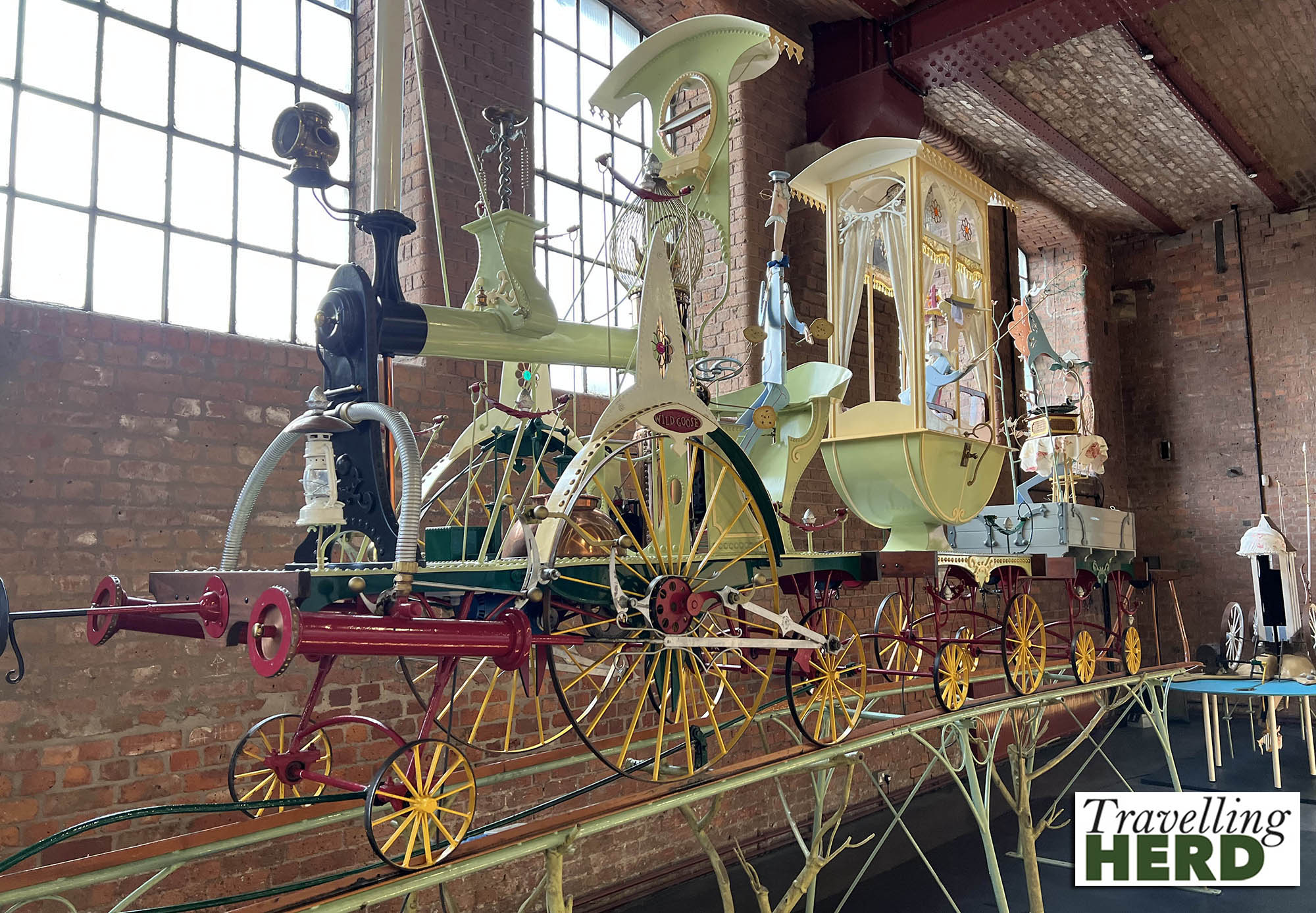
Manchester was built on cotton and the museum also includes the Textiles Gallery featuring the machines, people and stories which made Manchester the first industrialised city.
Cotton brought some people great wealth. The website states that ‘innovation and profits went hand in hand with inequality and exploitation, on a local and global scale. In 1860, over 80% of the cotton processed in mills in and around Manchester was grown by enslaved African people on plantations in the southern United States. Manchester’s manufacturers only got the cotton in the quantities and at the prices they desired because of this system of human exploitation’.
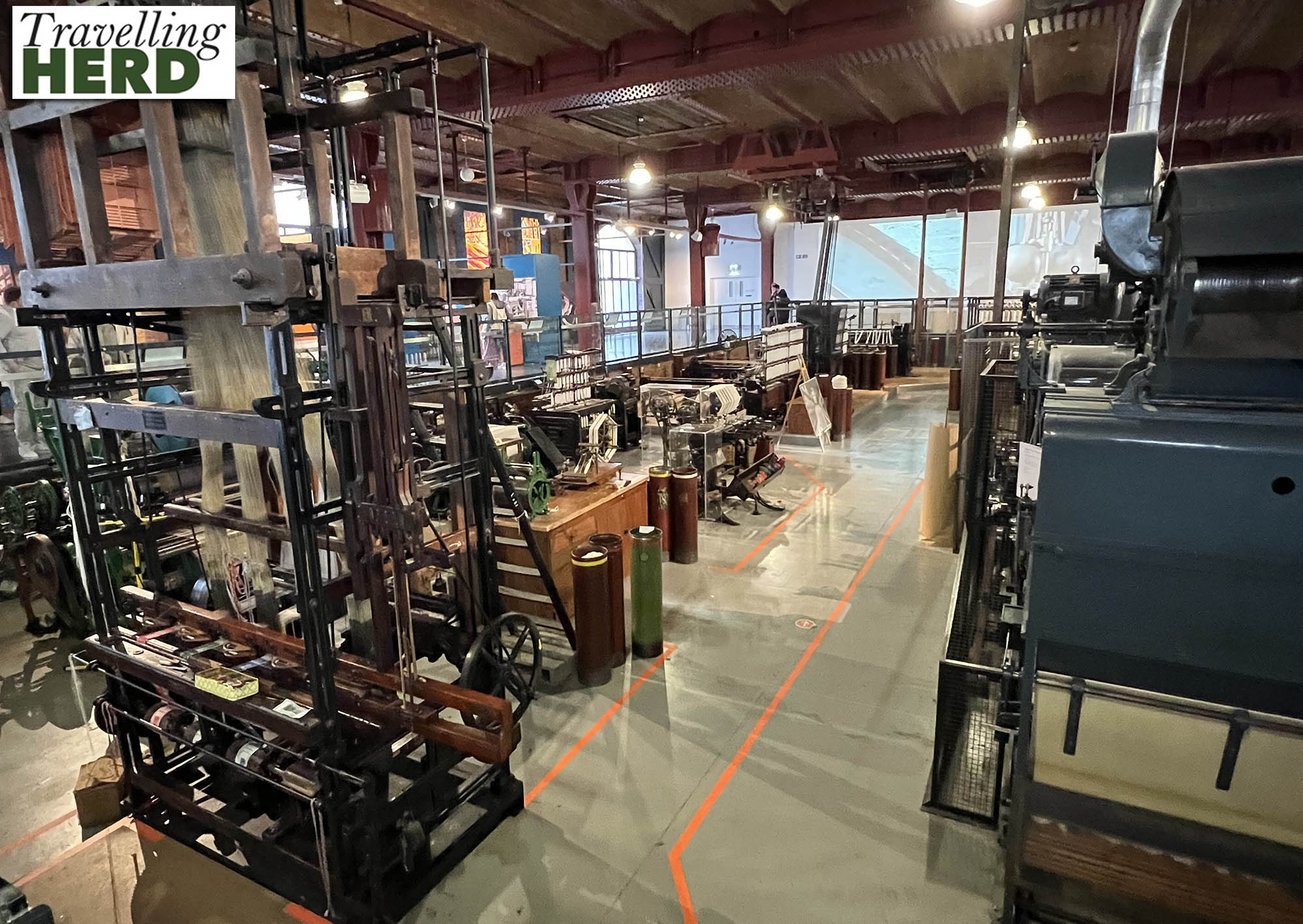
The museum also includes many interactive exhibits and Matilda was particularly taken with one where children were raising and lowering a yellow mini using a system of gears.
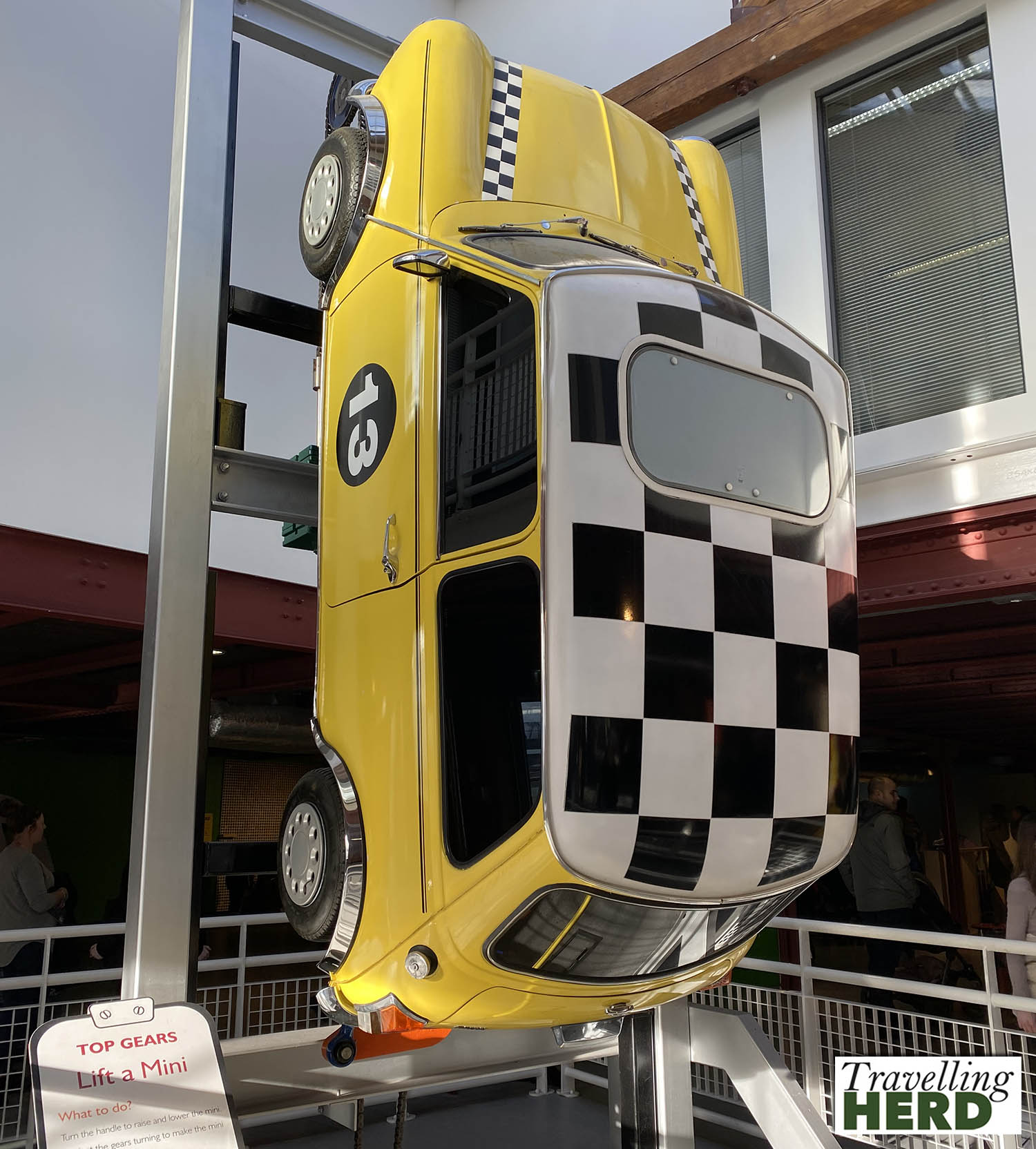
After leaving the museum, we climbed the 60 steps up to the nearby Castlefield Viaduct, a Grade II-listed viaduct in the heart of the oldest part of Manchester. It was built in 1892 by Heenan and Froude, the engineers who worked on Blackpool Tower and the viaduct was used to carry heavy rail traffic in and out of the Great Northern Warehouse until 1969. Now under the auspices of the National Trust this ‘striking Victorian-era steel viaduct is on the way to becoming a green ‘sky park’ in the heart of historic Manchester’. Unfortunately when we visited it was closed for the winter and it seems we will have to plan yet another return visit.
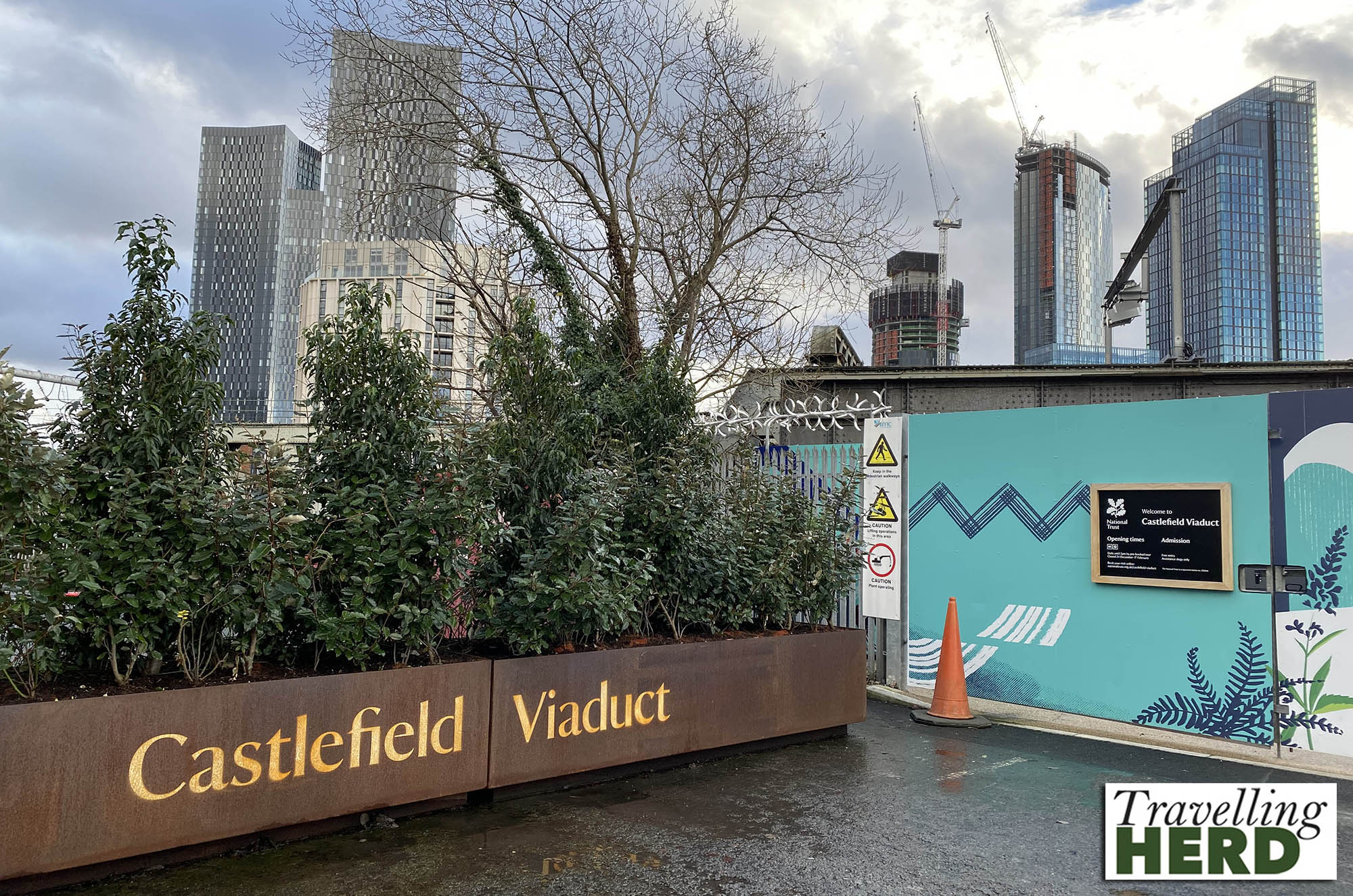
Walking along Canal Street beside the Rochdale Canal, Matilda felt compelled to revisit her days on The Duke by opening one of the lock gates. Thankfully she chose one which was well-balanced and moved smoothly.
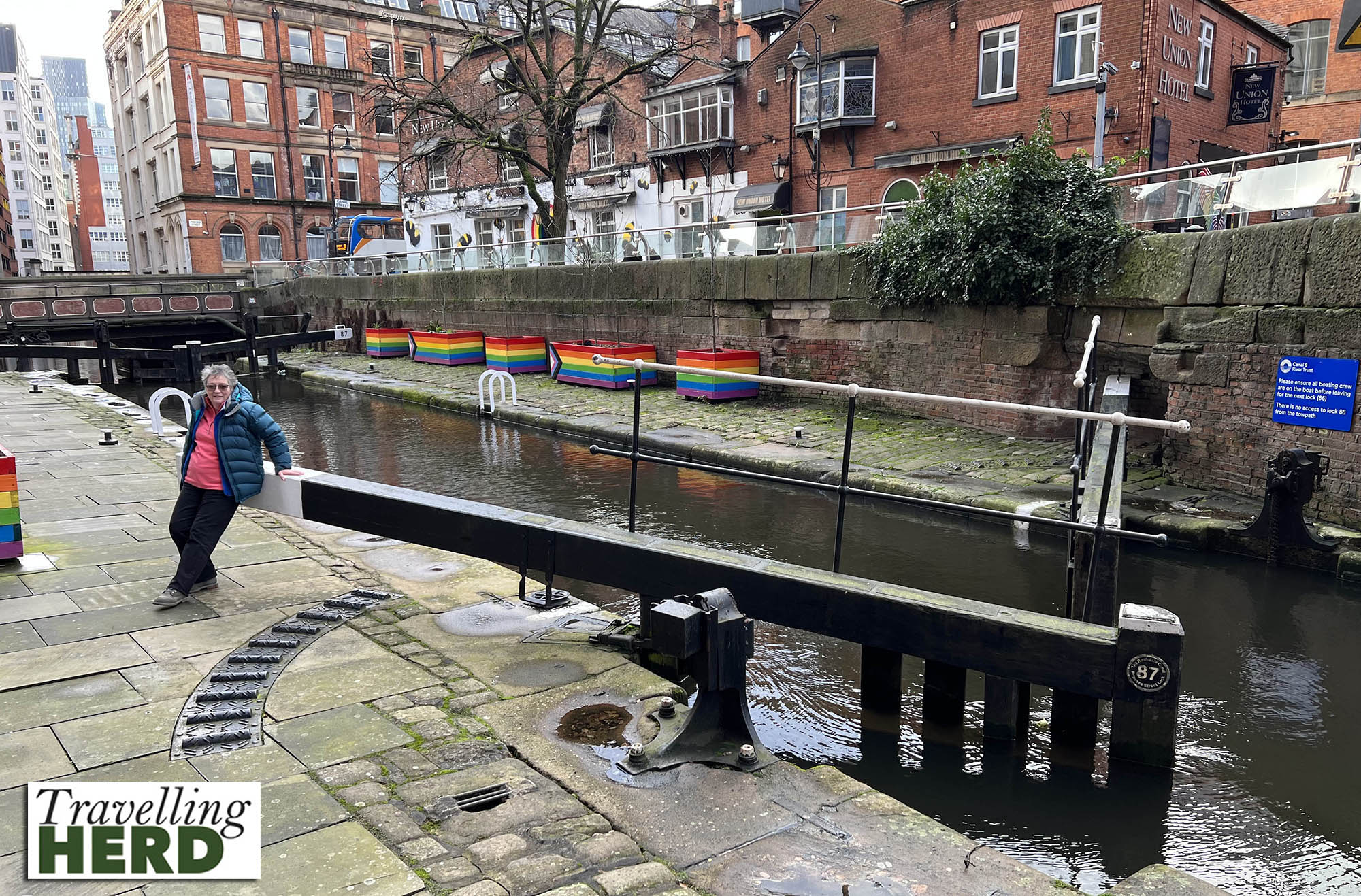
Only after we had planned the trip did Robert realise that our visit would coincide with the local football derby – Manchester United were playing Manchester City at Old Trafford. We had no option but to brave the potential crowds in the city centre.
In The Grey Horse Inn Robert got as far as asking the gentleman seen in the photo behind him [below left] “Do you mind if I ask …” to be told bluntly “Seven foot”. He clearly gets asked this question regularly.
The Circus Tavern [below right] is just two doors down from The Grey Horse Inn. We were initially refused entry on the grounds that the pub was full but fortunately as we were standing on the steps some people left and the imposing gentleman on the door took pity on us and let us in. We later discovered that this was Barry Hayes, the landlord. There are some side rooms but the bar itself is little more than a corridor.
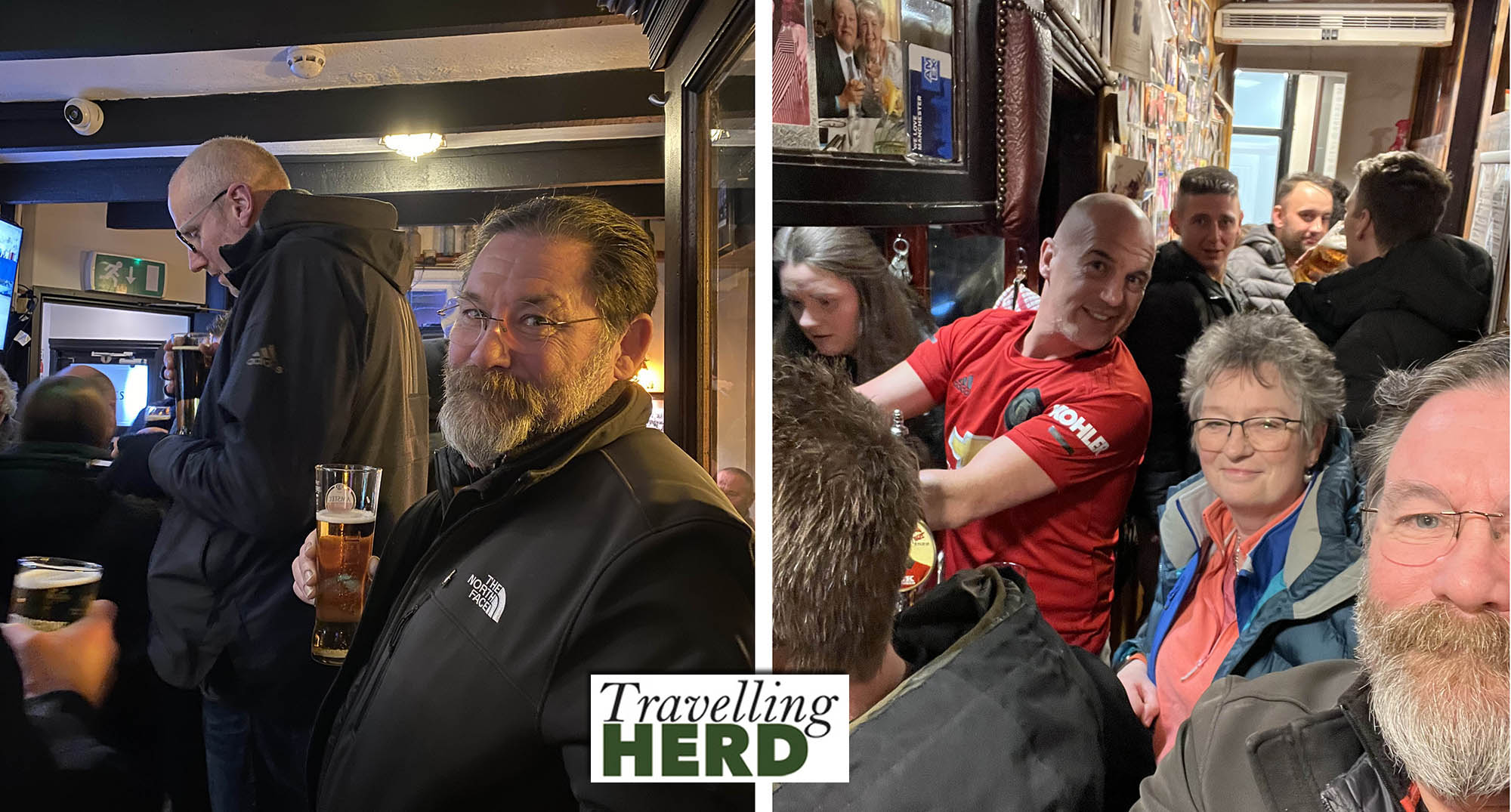
Although traditionally both bars are frequented by United fans, the atmosphere was very genial and fans from both sides were welcome. George Best used to drink in the Circus Tavern which claims to be the smallest pub in the city. It also claims to be the smallest bar in Europe. In this context ‘bar’ refers to the area where the staff serve beer, rather than the building itself or the space available for customers. However, with hindsight we did drink in two of the smallest establishments in Manchester so the crowds may not have been entirely attributable to the football derby.
The following morning as we drove south we crossed Bridge 49 on the Macclesfield Canal an electrically operated swing-bridge where Matilda had previously halted the traffic with the turn of a key and the press of a button [see Narrowboat Adventure #5]. This time we were able to drive straight over it.

Selfie of the day:
